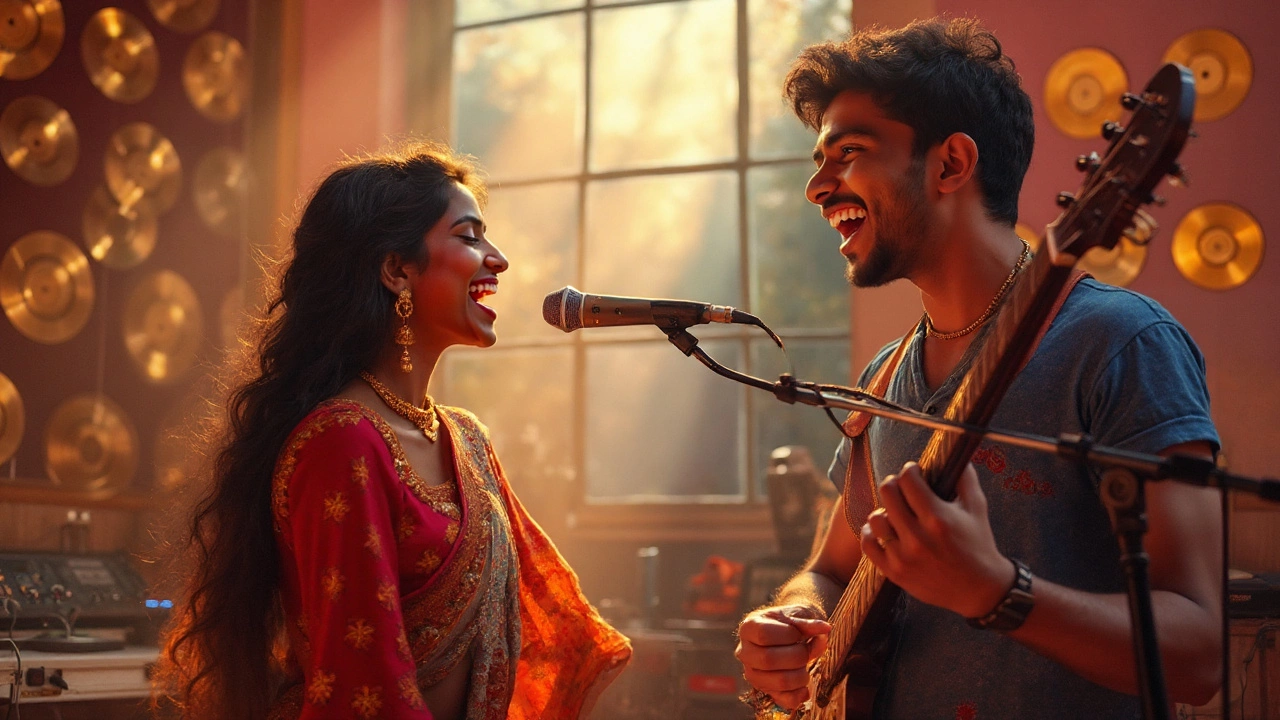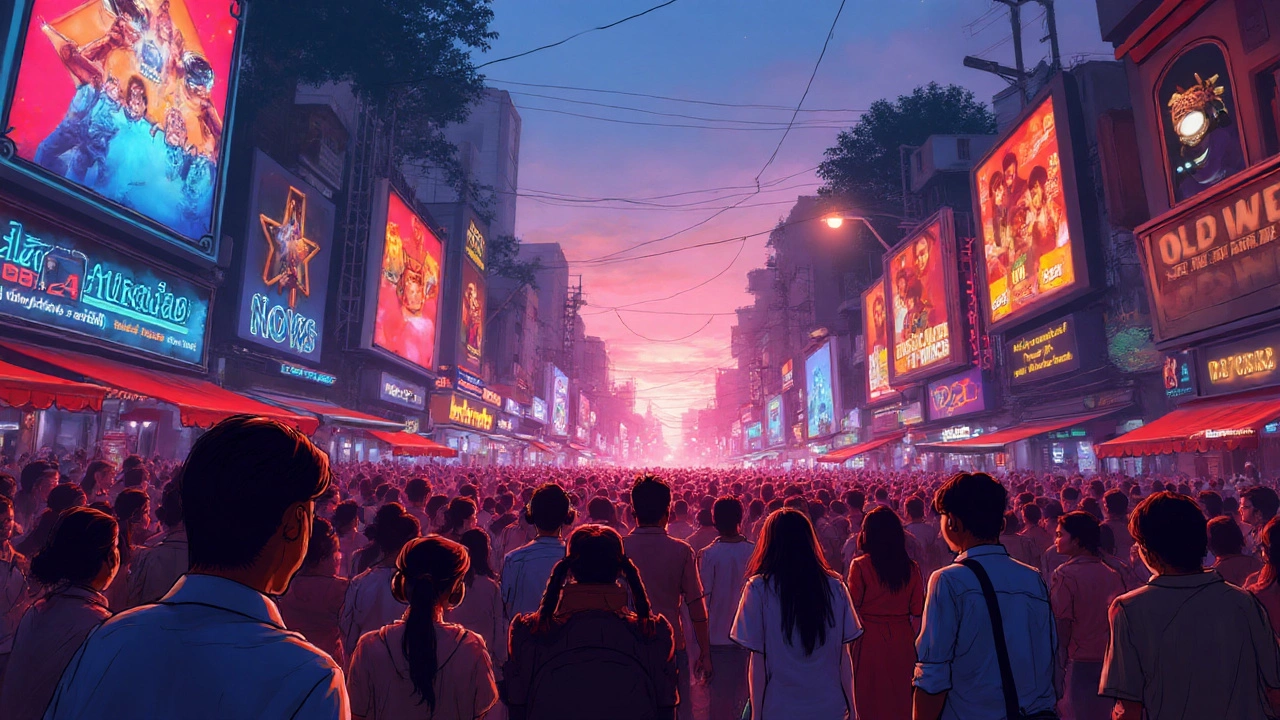No. 1 Song in India: Latest Hits, Trends & Streaming Secrets
 Aug, 8 2025
Aug, 8 2025
Ever noticed how music in India isn’t just background noise, but more like a heartbeat pulsing through nearly everything? The excitement for the No. 1 song in India is a full-on obsession—from tea stalls in Mumbai playing the latest bangers, to family WhatsApp groups buzzing about a new hook, to rickshaws blasting out songs you’ll remember all day. It’s not just about catchy beats or clever lyrics. These tunes basically soundtrack an entire country’s life, from weddings to cricket matches.
The Formula Behind India’s Top Song: What Really Wins the Charts?
It’s a bit wild to think just how tough it is for a song to hit No. 1 in India. This isn’t like topping the Billboard in one genre or getting radio airplay for a week. India’s chart-toppers face a crazy mixture of challenges—linguistic diversity, musical regionalism, heavy competition from both big Bollywood numbers and indie tracks, plus the wild card of social media trends. Hindi tracks usually dominate, but don’t get it twisted—Punjabi hits, Tamil mass-music, and Telugu bangers all eye the same crown. Each state literally feels like its own music battleground.
So, what’s the magic sauce? For 2025, the chart king often comes down to a mash-up of film tie-ins, social media virality, and celebrity appeal. Tanishk Bagchi, for instance, keeps grinding out remixes and originals for movies—think ‘Dil Ka Telephone 2.0’ from the movie ‘Dream Girl Returns’ which went wild after meme pages grabbed it. Social media dances play a huge part; take ‘Saathiya 2.0’ which exploded on Instagram Reels as soon as Tiger Shroff posted his own dance on it in March. Look at YouTube’s trending list—you’ll spot it topping for days, mostly thanks to millions of fan-made shorts.
Punajbi music works its own separate magic. In 2025, tracks like ‘Ladke Da Swag’ by Guru Randhawa and Badshah, though not tied to movies, have matched Bollywood numbers for sheer streaming numbers. Indian music charts, such as the IMI International Top 20 Singles, now measure not only radio plays but also digital streaming, social signal boosts, and Shazam searches. Check this out for just last week (late July 2025):
| Song | Artist | Streams (Millions) | Platform Dominance |
|---|---|---|---|
| Dil Ka Telephone 2.0 | Meet Bros, Jonita Gandhi, Nakash Aziz | 87 | Spotify, YouTube |
| Ladke Da Swag | Guru Randhawa, Badshah | 82 | Spotify, Gaana |
| Saathiya 2.0 | Arijit Singh, Payal Dev | 75 | YouTube, JioSaavn |
| Vera Level | Yuvan Shankar Raja | 58 | Spotify, Wynk |
Want a quirky tip? The real sign a tune is about to go No. 1 is when you hear it as someone’s ringtone—those Jio and Airtel caller tunes function as mini-charts all on their own.

Streaming, Stats, and the Viral Spice: What Powers the Hit Engine?
The way India measures its biggest hit has shifted a ton in the last five years. YouTube used to be the whole story—songs like ‘Kala Chashma’ or ‘Bom Diggy Diggy’ could rack up hundreds of millions of views and that’d be enough. But by 2025, Spotify, JioSaavn, Gaana, and especially short-form platforms like Instagram Reels, have changed the game. Last quarter, Spotify reported that Indian users created 280 million song-related playlists in just three months. If a new track gets playlisted, gets a meme trend, or dances its way onto Reels, it’s almost instantly chart material.
Data pulls from the first week of August 2025 put ‘Dil Ka Telephone 2.0’ at over 335 million streams across platforms since its release in June, with 45% of those driven solely by user-created content on social media. Indians, it turns out, don’t just listen—they participate. Dance challenges, lip-sync trends, and remixes from TikTokers (yes, Indian TikTok is back post-ban but run differently now) feed the loop. A song heard in the background of food vlogs or travel reels ends up stuck in everyone’s head and pooling more listens the next morning.
But why do certain tracks stick? Here’s a quick look at what the numbers say:
- 93% of top charting songs in India 2025 are part of a movie soundtrack.
- Bollywood actors featuring in a music video boost a song’s viral chances by 40%—if Vicky Kaushal’s in it, streams jump.
- Punajbi music’s market share is at an all-time high, now making up 30% of top 10 chart spots nationwide—even non-Punjabis blast AP Dhillon and Sidhu Moosewala’s old hits at parties.
- Songs debuting via Instagram teasers are 2.3 times more likely to spike than those start with traditional media promotion.
- The top 5 songs of summer 2025 spent, on average, only 9 days to climb from release to chart peak.
Another insider detail: in Bengaluru and Hyderabad, listeners prefer more electronic, peppy beats, while Mumbai and Delhi still lean towards romantic and qawwali-infused tracks. Chennai’s picks? Usually fuse Tamil hip-hop with old-school Carnatic touches, and those slip into the all-India top 20 every so often. Songwriters who crack city preferences tend to make the big breakthrough.

This Week’s No. 1 Song: Who Holds the Crown and Why?
If you pulled up the Indian music charts on August 8, 2025, you’d find ‘Dil Ka Telephone 2.0’ holding the No. 1 slot for the third week straight. Why this song? Well, besides the beat that’s stuck in every cabby’s playlist and the chorus your young cousins shout at every family get-together, there’s a full-on marketing blitz that’s tough to match. The music video stars Ayushmann Khurrana and Nushrratt Bharuccha, who throw down some goofy dance moves with earworm sing-along energy. Add the coordinated social media drop: Ayushmann posted a behind-the-scenes clip of him trying to get the steps right—next thing you know, it shows up as one of the top trends on X (yes, Twitter’s still around, rebranded but surviving).
The track’s composers and singers leaned hard into nostalgia, sampling beats from the 2019 original but adding 2025’s synth production, a tempo perfect for dance reels, and a Hindi-Punjabi chorus mix that opens it up to more fans. Even online remixes are supporting the push—DJ Chetas and YouTuber Ruhi Singh both dropped their own takes, each racking up millions of views in days. That social buzz translates directly to chart firepower.
Spotting a few similar patterns? The past year’s other No. 1s—like ‘Tere Sang Ishq Hua’ by Arijit Singh and Shreya Ghoshal, or the Tamil hit ‘Pudhiya Vidiyal’—had that same cross-platform push. Movie studios back songs with full campaigns, actors tease lyrics, Spotify makes them the face of playlists, and suddenly Uber drivers all play them on loop. The IMI charts use a weighted average—streaming numbers get the biggest weight (55%), radio spins come next, and then social reach. Even city-level votes for 'most heard at weddings' factor in (that one’s a real thing, checked by market research agencies!).
And don’t discount regional surprises. This summer, 'Vera Level' from Yuvan Shankar Raja (a blockbuster from a Tamil action flick) broke into the all-India top 10 mostly on the back of southern states. About 37% of its streams came from outside Tamil Nadu, showing just how easily a regional hit can tip into the national chart if TikTok or YouTube Shorts grabs hold of a killer hook or hook step dance.
Want to track the next No. 1 before it goes global? Watch for these signs:
- Sudden surges in Instagram Reels or Snapchat stories using a specific beat.
- Actors or cricketers sharing a dance challenge (if Hardik Pandya’s in, it’s gold).
- Clips of the song popping up in wedding sangeet or roadside dance bar videos—bonus if someone’s grandma is dancing too.
So the No. 1 song isn’t just a radio creation or a studio masterstroke—it’s a wild collaborative event. If it gets stuck in your head, don’t fight it. India’s already humming it with you.